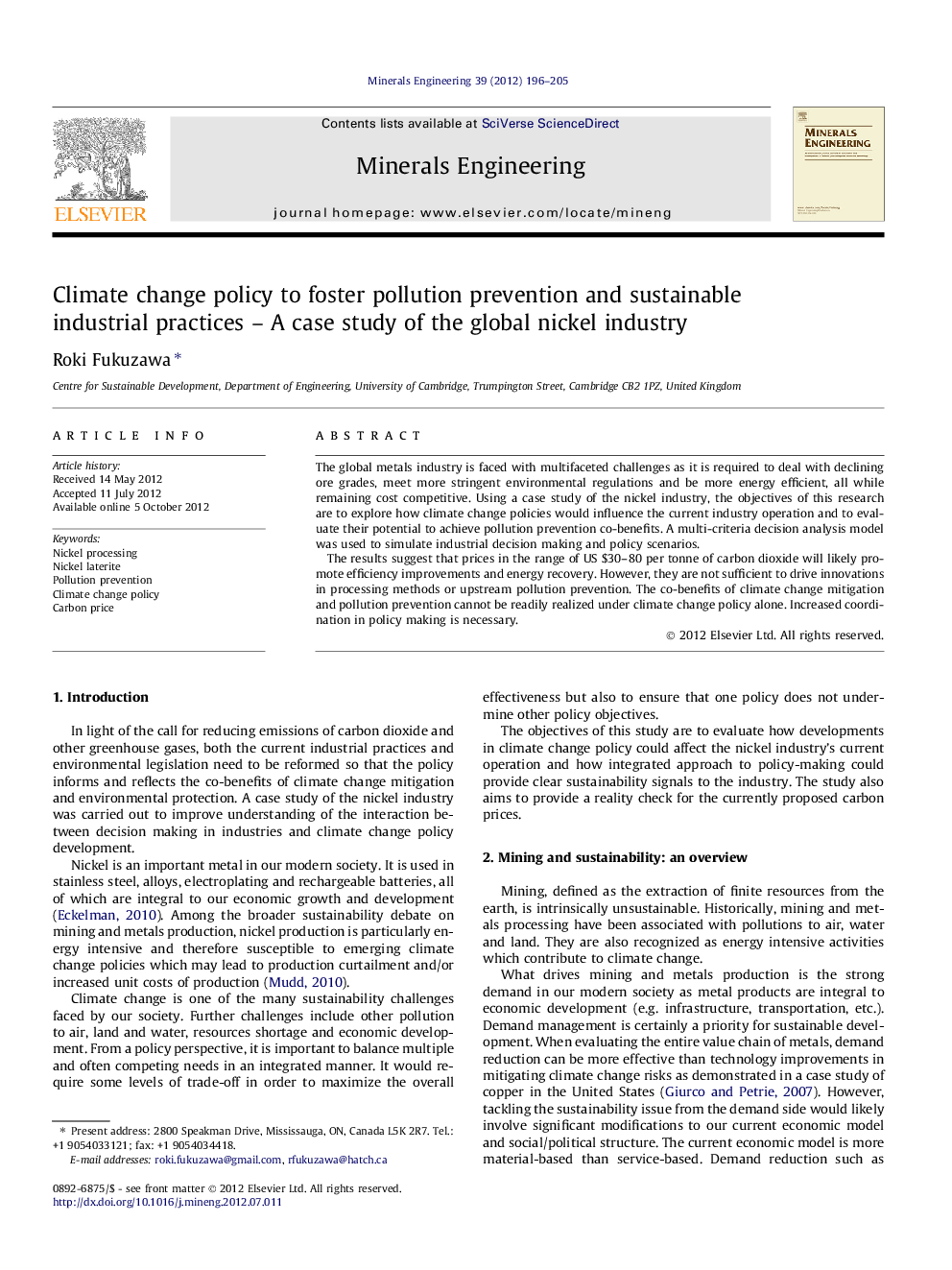| Article ID | Journal | Published Year | Pages | File Type |
|---|---|---|---|---|
| 233597 | Minerals Engineering | 2012 | 10 Pages |
The global metals industry is faced with multifaceted challenges as it is required to deal with declining ore grades, meet more stringent environmental regulations and be more energy efficient, all while remaining cost competitive. Using a case study of the nickel industry, the objectives of this research are to explore how climate change policies would influence the current industry operation and to evaluate their potential to achieve pollution prevention co-benefits. A multi-criteria decision analysis model was used to simulate industrial decision making and policy scenarios.The results suggest that prices in the range of US $30–80 per tonne of carbon dioxide will likely promote efficiency improvements and energy recovery. However, they are not sufficient to drive innovations in processing methods or upstream pollution prevention. The co-benefits of climate change mitigation and pollution prevention cannot be readily realized under climate change policy alone. Increased coordination in policy making is necessary.
► A decision model to assess effectiveness of carbon prices on the nickel industry. ► Renewable electricity supply is effective to decarbonize the metallurgical process. ► Carbon prices are insufficient to drive innovations towards pollution prevention. ► Integration of different policy initiatives is necessary to achieve co-benefits.
